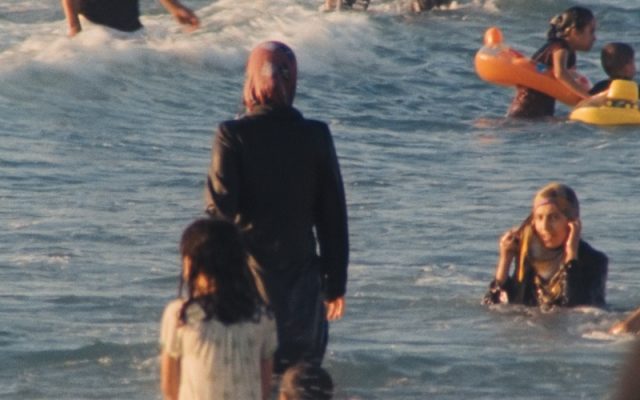FRom Narrow PROVINCES
ruth LAskey, Claire BARCLAY, ALISON TURNBULL, ALEANA EGAN, RANA BEGUM
ROSALIND NASHASHIBI
RECENT FILMS
UPSTAIRS SPACE
SAT 12 OCtober – SAT 14 december
THURS-SAT, 11AM-5PM, OR BY APPOINTMENT
ADMISSION IS FREe
SCREENING SPACE
SAT 12 OCTOBER – SAT 14 DECEMBER
THURS-SAT, 11AM-5PM, OR BY APPOINTMENT
ADMISSION IS FREE


This autumn, CAMPLE LINE presents From narrow provinces, its first group exhibition featuring a selection of work by five contemporary international artists whose respective practices emphasise material, structure and process from compelling junctures between painting, printmaking, textiles, drawing and sculpture.
Rana Begum creates abstract installations that challenge the distinction between sculpture, painting, architecture and design, and draw inspiration from repetitive geometric patterns found within Islamic art and urban architecture. Increasingly dissatisfied with the given materials of painting, Ruth Laskey has pursued a dedicated and labour-intensive practice focused on weaving hand-dyed colours into linen canvas, and she has recently begun to explore a dynamic between weaving and printmaking. Claire Barclay is a sculptor and printmaker: her sculptural practice explores formal and conceptual concerns through both large and smaller-scale installations, alongside which her printmaking has become increasingly important. Known for intricate abstract paintings and drawings that she creates from found materials, Alison Turnbull has said of her Drawing Table series, begun in 2010: ‘In the tables the drawings are like artefacts and the work as a whole becomes quite sculptural.’ Likewise, Aleana Egan often negotiates a fine balance between drawing and sculpture in her practice, and develops her work as ‘an emotional record of a built world.’
All the works are made from practical, everyday materials including bandages, threads, pigments, cardboard, MDF and exercise books, and they are constructed from the artists’ rigorous pursuit of manual processes such as drawing, dyeing, weaving, dipping, or pressing. Texture, colour, tone, structure and shape are integral, arrived at through a characteristic or logic found within the material or process, or intuitively through purposeful experimentation.
The exhibition’s title is taken from the first line of Elizabeth Bishop’s poem The Moose (1972)
CAMPLE LINE is delighted to present Rosalind Nashashibi’s latest two-part film in a short season of Nashashibi’s recent work and in partnership with Edinburgh Art Festival through the PLACE Programme.
Rosalind Nashashibi works primarily in film and also makes paintings and prints. Her films typically focus on moments and events, and often merge everyday observations with fantastical and mythological elements. The films can be meditative and sensuous, and fuse narrative techniques with observational footage, creating a procession of images in which staged scenes flow seamlessly into real life.
Shot in Lithuania, London and Edinburgh, this new two-part film takes its starting point from a short story by the science fiction writer Ursula K. Le Guin, The Shobies’ Story, which follows a group of individuals coming together in preparation for an experiment in space travel using non-linear time. Featuring the artist and her children, as well as close friends which she considers extended family, Nashashibi’s film explores how we make our own communities and how a group’s sense of commonality may dissolve when there is an absence of communal experience or adherence to linear time.
In Electrical Gaza (2015), observations of domestic life in Gaza are combined with animated segments that consider the notion of community in contemporary Palestine. Footage of families and friends engaged in everyday activities are contrasted with unapologetic reminders of the local political situation and geographical isolation. Vivian’s Garden (2017) depicts the relationship between two Swiss/Austrian émigré artists who are mother and daughter – Elisabeth Wild and Vivian Suter – within the connected houses the two women share in a jungle garden in Panajachel, Guatemala.
Nashashibi has said, ‘I really like to look closely at a situation I am in whether it’s what happens between two people, or what happens between a group, or a group of houses, or closed communities…and within that limit I think I can talk about wider models or archetypes or ways of living with others, and living with objects and in institutions.’
